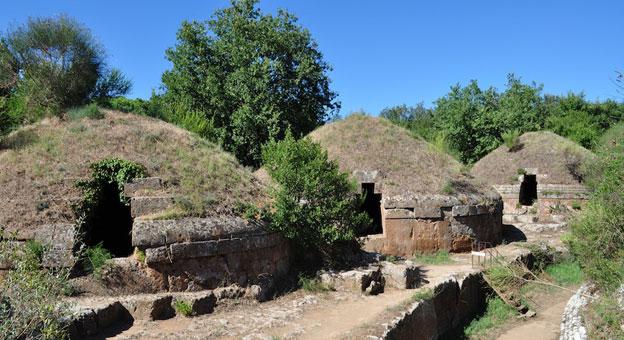The Etruscan necropolis of Banditaccia, a UNESCO World Heritage Site located in Cerveteri, near Rome, is set to showcase some previously closed tombs and a new welcome center on July 4, following an upgrade and renovations co-funded by the European Union and Italy.
The Necropoli della Banditaccia covers an area of 400 hectares (990 acres), encompassing a total of 1,000 tombs, often housed in characteristic mounds. One of its most famous tombs, which will reopen this July, is the Tomb of the Painted Lions, a 7th-century BC tomb once frescoed with lions.
"Few people know this, but this is the largest archaeological site in the world, even bigger than the Valley of the Kings in Egypt," Lorenzo Croci, Cerveteri's sustainable-development councilor, told Italy’s news agency ANSA. He said with the new upgrade he hopes to double the number of annual visitors to the site, which today stands at 65,000. "We want for the site to receive the recognition it deserves," Croci said.
Cerveteri is believed to have been one of the city-states of the Etruscan League, with a population of around 25,000 - 40,000 people, at its height around 600 BC. The Etruscan civilization occupied the central region of Italy from 700 BC, and flourished until the end of the second century BC, when it was subsumed into Roman culture.










